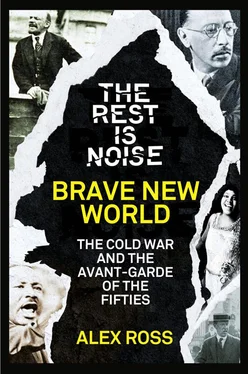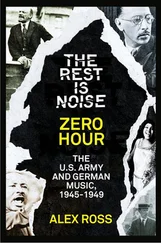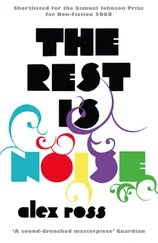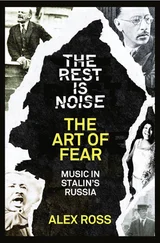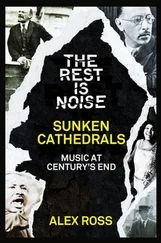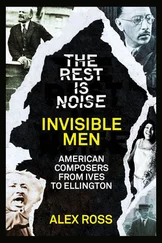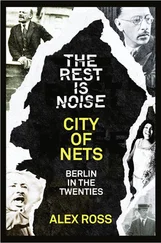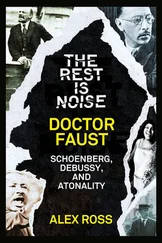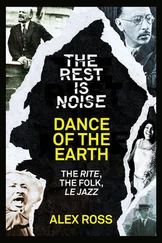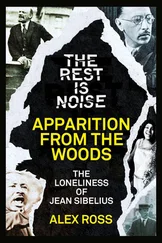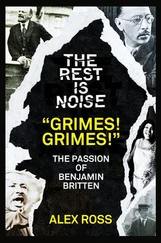This is a chapter from Alex Ross’s groundbreaking history of 20 thcentury classical music, The Rest is Noise .
It is released as a special stand-alone ebook to celebrate a year-long festival at the Southbank Centre, inspired by the book. The festival consists of a series of themed concerts. Read this chapter if you’re attending concerts in the episode
Post-War World: Making a Break with the Past
Alex Ross, music critic for the New Yorker , is the recipient of numerous awards for his work, including an Arts and Letters Award from the American Academy of Arts and Letters, the Belmont Prize in Germany and a MacArthur Fellowship. The Rest is Noise was his first book and garnered huge critical acclaim and a number of awards, including the Guardian First Book Award and the National Book Critics Circle Award. He is also the author of Listen to This .
BRAVE NEW WORLD
The Cold War and the Avant-Grade of the Fifties
From The Rest Is Noise by Alex Ross

Contents
Brave New World
Notes
Suggested Listening and Reading
Copyright
About the Publisher
11
BRAVE NEW WORLD
The Cold War and the Avant-Garde of the Fifties
“Everything begins in mystique and ends in politics,” wrote the French poet Charles Péguy in 1910. Morton Feldman, the maverick modernist who loved Sibelius, applied this epigram to twentieth-century music, describing how grandiose ideas are made ordinary with the passage of time and become fodder for a power struggle among ideologues and pedants. “Unfortunately for most people who pursue art, ideas become their opium,” Feldman said. “There is no security to be one’s self.”
The century began with the mystique of revolution, with the mind-bending harmonies and earthshaking rhythms of Schoenberg and Stravinsky. The process of politicization was already under way in the twenties, as composers competed to stay ahead of changing trends and accused one another of complicity in regressive tendencies. In the thirties and forties, the entire Romantic tradition was effectively annexed by the totalitarian state. But nothing could compare to what happened when the Second World War ended and the Cold War began. Music exploded into a pandemonium of revolutions, counterrevolutions, theories, polemics, alliances, and party splits. The language of modern music was reinvented on an almost yearly basis: twelve-tone composition gave way to “total serialism,” which gave way to chance music, which gave way to a music of free-floating timbres, which gave way to neo-Dada happenings and collages, and so on. All the informational clutter of late-capitalist society, from purest noise to purest silence, from combinatorial set theory to bebop jazz, came rushing in, as if no barrier remained between art and reality. Strange bedfellows were the order of the day. Following in the footsteps of OMGUS, the CIA occasionally funded festivals that included hyper-complex avant-garde works. Cold War politicians such as John F. Kennedy promised a golden age of freethinking art, and twelve-tone composers at American universities were the indirect beneficiaries.
The Second World War was the war that never really ended. The Allied superpowers stayed on a military footing, and the introduction of atomic warfare and the discovery of the death camps in the summer of 1945 brought about a worldwide darkening of mood. The rhetoric of the early Cold War period crept into the musical discussion as into everything else. Composers exploited possibilities, annexed territory, neutralized the opposition, advanced, retreated, changed sides. When Stravinsky shocked his colleagues by giving up neoclassicism in favor of twelve-tone composition, Leonard Bernstein said that “it was like the defection of a general to the enemy camp, taking all his faithful regiments with him.”
The dominant aesthetic, in European and American music alike, was one of dissonance, density, difficulty, complexity. The American composer Elliott Carter explained why he gave up Copland-style populism and Stravinsky-style neoclassicism: “Before the end of the Second World War, it became clear to me, partly as a result of rereading Freud and others and thinking about psychoanalysis, that we were living in a world where this physical and intellectual violence would always be a problem and that the whole conception of human nature underlying the neoclassic esthetic amounted to a sweeping under the rug of things that, it seemed to me, we had to deal with in a less oblique and resigned way.”
The most formidable proponent of sweeping nothing under the rug was Theodor Adorno—Berg’s old student, Sibelius’s nemesis, Thomas Mann’s musical adviser in the writing of Doctor Faustus . After the war Adorno acquired an intimidating reputation as a post-Marxist philosopher and deep-thinking musical analyst. He was an effective practitioner of the politics of style, using every device at his disposal to demean music that he considered retrogressive. One objective of his 1949 book Philosophy of New Music was to destroy the neoclassicism of Stravinsky: the very act of preserving tonality in the modern era, Adorno proposed, betrayed symptoms of the Fascist personality. He condemned Hindemith on similar grounds, arguing that the “New Objectivity” and “music for use” were tantamount to Nazi kitsch. In his book Minima Moralia Adorno mocked American composers of the populist persuasion, claiming that Copland’s Lincoln Portrait could be found on the gramophone of every Stalinist intellectual.
The only possible path for Adorno was the one that Schoenberg had marked out at the beginning of the century. In fact, music would now carry its holy torch into abysses where even Schoenberg had not dared to go. All familiar sounds, all relics of convention, had to be expunged. The crucial passage in Philosophy of New Music was this:
[New music] has taken upon itself all the darkness and guilt of the world. All its happiness comes in the perception of misery, all its beauty comes in the rejection of beauty’s illusion. Neither the individual nor the collective wants any part of it. It dies away unheard, without echo. When music is heard, it is shot through with time, like a shining crystal; unheard music drops through empty time like a useless bullet. New music spontaneously takes aim at that final condition which mechanical music lives out hour by hour—the condition of absolute oblivion. It is the true message in a bottle.
Such language, reminiscent of the sermons of Thomas Mann’s aesthetes (“Art is the sacred torch that must shed its merciful light into all life’s terrible depths”), made perfect sense to the young composers who had recently witnessed oblivion at close range. Schoenberg, having been denounced by Hitler and Stalin alike, carried no taint from totalitarianism either on the left or on the right, or so it seemed. Ernst Krenek went so far as to suggest that he had converted to twelve-tone writing in order to distance himself from totalitarian aesthetics: “My adoption of the musical technique that the tyrants hated most of all may be interpreted as an expression of protest and thus a result of their influence.” Many who abandoned neoclassicism and other between-the-war styles may have thought the same. René Leibowitz argued in his book Schoenberg and His School that atonality displayed “uncompromising moral strength .”
Читать дальше
